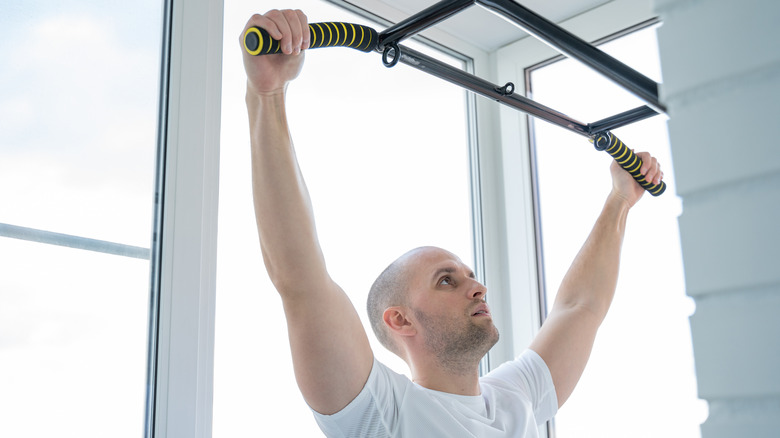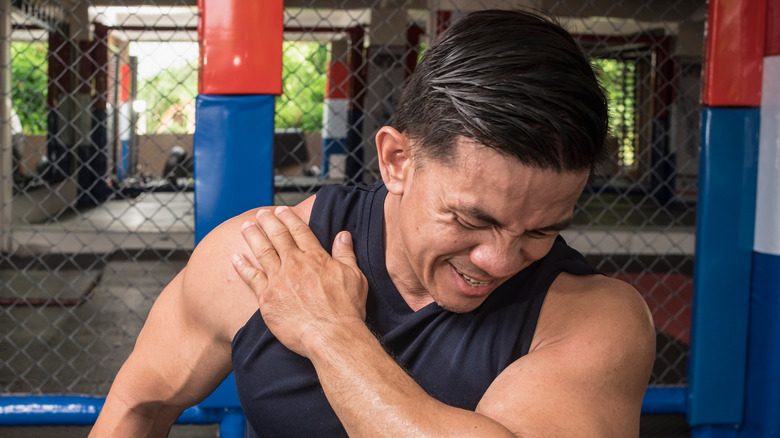Why Beginners Should Think Twice Before Doing Pull-Ups
Movie and television scenes that feature a gym often have the same few things going on in the background. Someone is lifting free weights, a person is on a treadmill, and someone is doing a pull-up. With pull-ups at least, there is a good reason for that. They're a sort of benchmark, seen as an indication of someone's strength. They are, as BarBend puts it, a milestone in a person's strength training progress.
Like any milestone, it's something that has to be built up to. BarBend has a 4-week program designed to prepare people for their first pull-up. It is also for those who could once do them but now struggle. Of course, 4 weeks might seem like an excessive amount of training to some people. However, there is a reason that the American Council on Exercise rates the pull-up as an activity of intermediate difficulty. Those reasons are exactly why beginners should think twice before they try to do a pull-up.
Pull-ups put your shoulders at risk
The American Council on Exercise explains that pull-ups are considered intermediate because, while they are excellent for working the muscles of the back, it is imperative that they be performed without putting undue strain on the shoulder. Livestrong echoes this sentiment, noting that the overhead position, in addition to shifting the weight onto the arms, back, and shoulders, can greatly increase a person's chance of injuring their rotator cuff.
Rotator cuff injuries, like many sports injuries, are not something you want to risk with improper form. They're painful and can take a long time to heal, if they heal entirely at all. As the Mayo Clinic explains, past rotator cuff injuries increase your risk of injuring the area again. Since the rotator cuff is composed of the muscles and tendons that hold your arm in your shoulder socket, it's not an injury you want to have very often. Rotator cuff injuries can make it hard to reach up to head height or behind you. They can also leave you with muscle weakness in the affected arm. The Mayo Clinic explains that therapy and strengthening exercises can help treat the condition, but severe cases may require surgery. Neither treatment option is ideal, which is why it's best for beginners to perfect their form and increase their strength before attempting a pull-up.


